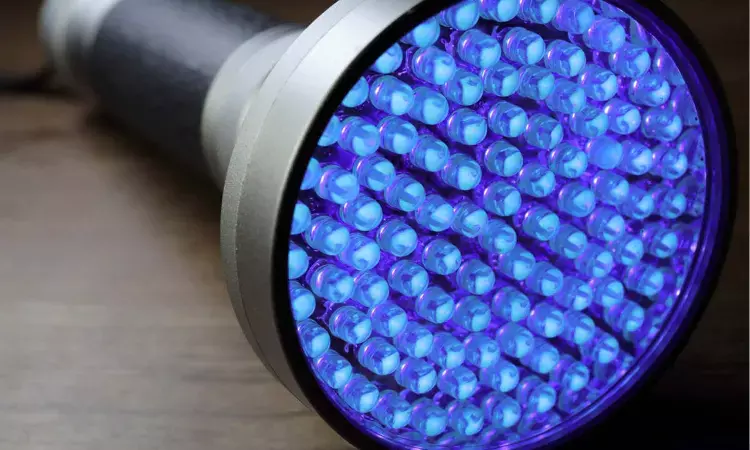- Home
- Medical news & Guidelines
- Anesthesiology
- Cardiology and CTVS
- Critical Care
- Dentistry
- Dermatology
- Diabetes and Endocrinology
- ENT
- Gastroenterology
- Medicine
- Nephrology
- Neurology
- Obstretics-Gynaecology
- Oncology
- Ophthalmology
- Orthopaedics
- Pediatrics-Neonatology
- Psychiatry
- Pulmonology
- Radiology
- Surgery
- Urology
- Laboratory Medicine
- Diet
- Nursing
- Paramedical
- Physiotherapy
- Health news
- Fact Check
- Bone Health Fact Check
- Brain Health Fact Check
- Cancer Related Fact Check
- Child Care Fact Check
- Dental and oral health fact check
- Diabetes and metabolic health fact check
- Diet and Nutrition Fact Check
- Eye and ENT Care Fact Check
- Fitness fact check
- Gut health fact check
- Heart health fact check
- Kidney health fact check
- Medical education fact check
- Men's health fact check
- Respiratory fact check
- Skin and hair care fact check
- Vaccine and Immunization fact check
- Women's health fact check
- AYUSH
- State News
- Andaman and Nicobar Islands
- Andhra Pradesh
- Arunachal Pradesh
- Assam
- Bihar
- Chandigarh
- Chattisgarh
- Dadra and Nagar Haveli
- Daman and Diu
- Delhi
- Goa
- Gujarat
- Haryana
- Himachal Pradesh
- Jammu & Kashmir
- Jharkhand
- Karnataka
- Kerala
- Ladakh
- Lakshadweep
- Madhya Pradesh
- Maharashtra
- Manipur
- Meghalaya
- Mizoram
- Nagaland
- Odisha
- Puducherry
- Punjab
- Rajasthan
- Sikkim
- Tamil Nadu
- Telangana
- Tripura
- Uttar Pradesh
- Uttrakhand
- West Bengal
- Medical Education
- Industry
Handheld ultraviolet light device may deactivate COVID-19

Researchers at Penn State, the University of Minnesota and two Japanese universities have found that a personal, handheld device emitting high-intensity ultraviolet light may disinfect areas by killing the novel coronavirus.
There are two commonly employed methods to sanitize and disinfect areas from bacteria and viruses -- chemicals or ultraviolet radiation exposure. The UV radiation is in the 200 to 300 nanometer range and known to destroy the virus, making the virus incapable of reproducing and infecting. Widespread adoption of this efficient ultraviolet approach is much in demand during the current pandemic, but it requires UV radiation sources that emit sufficiently high doses of ultraviolet light. While devices with these high doses currently exist, the UV radiation source is typically an expensive mercury-containing gas discharge lamp, which requires high power, has a relatively short lifetime, and is bulky.
The solution is to develop high-performance, UV light emitting diodes, which would be far more portable, long-lasting, energy efficient and environmentally benign. While these LEDs exist, applying a current to them for light emission is complicated by the fact that the electrode material also has to be transparent to UV light.
"You have to ensure a sufficient UV light dose to kill all the viruses," said Roman Engel-Herbert, Penn State associate professor of materials science, physics and chemistry. "This means you need a high-performance UV LED emitting a high intensity of UV light, which is currently limited by the transparent electrode material being used."
While finding transparent electrode materials operating in the visible spectrum for displays, smartphones and LED lighting is a long-standing problem, the challenge is even more difficult for ultraviolet light.
"There is currently no good solution for a UV-transparent electrode," said Joseph Roth, doctoral candidate in Materials Science and Engineering at Penn State. "Right now, the current material solution commonly employed for visible light application is used despite it being too absorbing in the UV range. There is simply no good material choice for a UV-transparent conductor material that has been identified."
Finding a new material with the right composition is key to advancing UV LED performance. The Penn State team, in collaboration with materials theorists from the University of Minnesota, recognized early on that the solution for the problem might be found in a recently discovered new class of transparent conductors. When theoretical predictions pointed to the material strontium niobate, the researchers reached out to their Japanese collaborators to obtain strontium niobate films and immediately tested their performance as UV transparent conductors. While these films held the promise of the theoretical predictions, the researchers needed a deposition method to integrate these films in a scalable way.
"We immediately tried to grow these films using the standard film-growth technique widely adopted in industry, called sputtering," Roth said. "We were successful."
This is a critical step towards technology maturation which makes it possible to integrate this new material into UV LEDs at low cost and high quantity. And both Engel-Herbert and Roth believe this is necessary during this crisis.
"While our first motivation in developing UV transparent conductors was to build an economic solution for water disinfection, we now realize that this breakthrough discovery potentially offers a solution to deactivate COVID-19 in aerosols that might be distributed in HVAC systems of buildings," Roth explains. Other areas of application for virus disinfection are densely and frequently populated areas, such as theaters, sports arenas and public transportation vehicles such as buses, subways and airplanes.
For more details click on the link: http://dx.doi.org/10.1038/s42005-020-0372-9
Hina Zahid Joined Medical Dialogue in 2017 with a passion to work as a Reporter. She coordinates with various national and international journals and association and covers all the stories related to Medical guidelines, Medical Journals, rare medical surgeries as well as all the updates in the medical field. Email: editorial@medicaldialogues.in. Contact no. 011-43720751
Dr Kamal Kant Kohli-MBBS, DTCD- a chest specialist with more than 30 years of practice and a flair for writing clinical articles, Dr Kamal Kant Kohli joined Medical Dialogues as a Chief Editor of Medical News. Besides writing articles, as an editor, he proofreads and verifies all the medical content published on Medical Dialogues including those coming from journals, studies,medical conferences,guidelines etc. Email: drkohli@medicaldialogues.in. Contact no. 011-43720751


